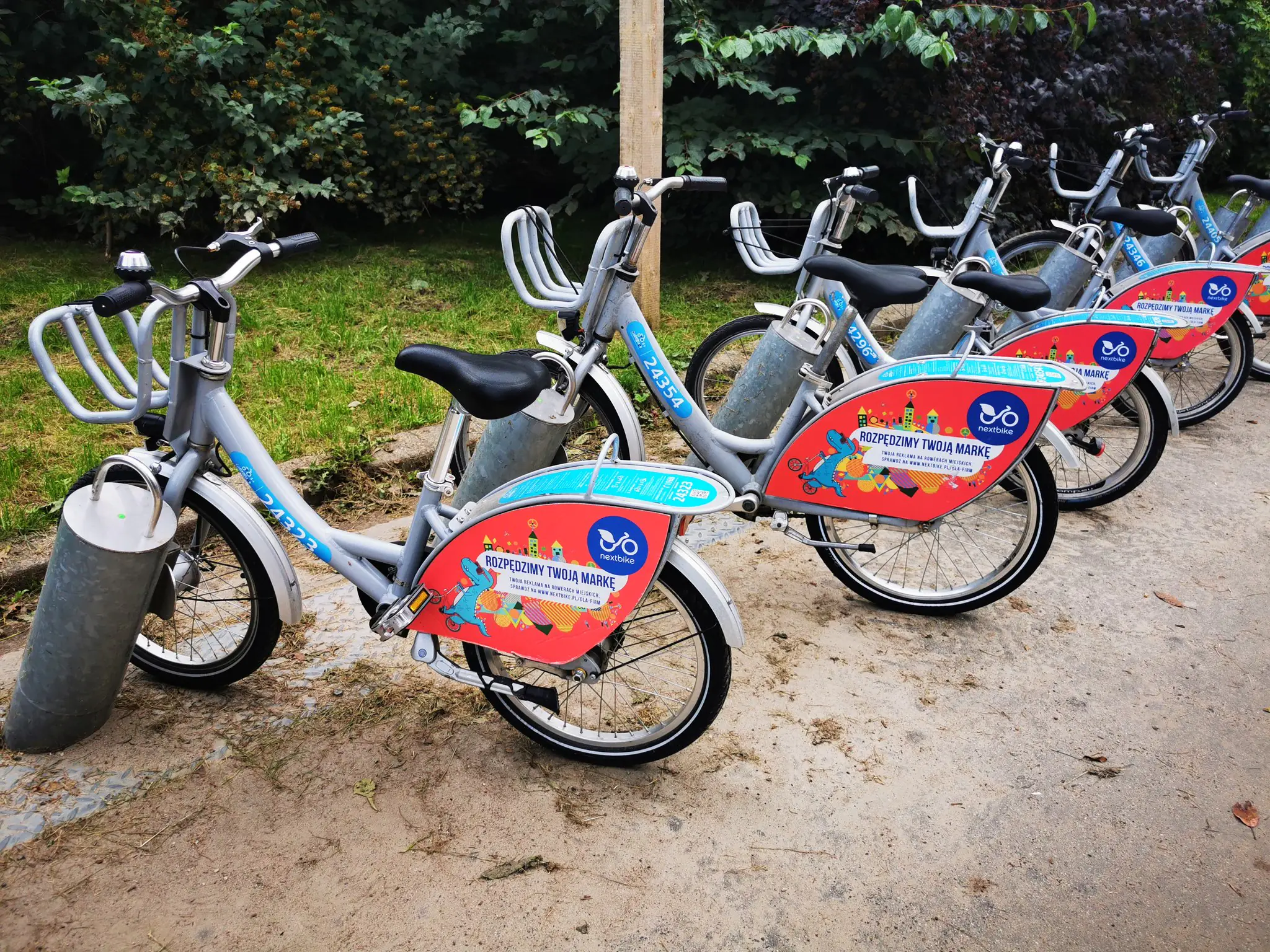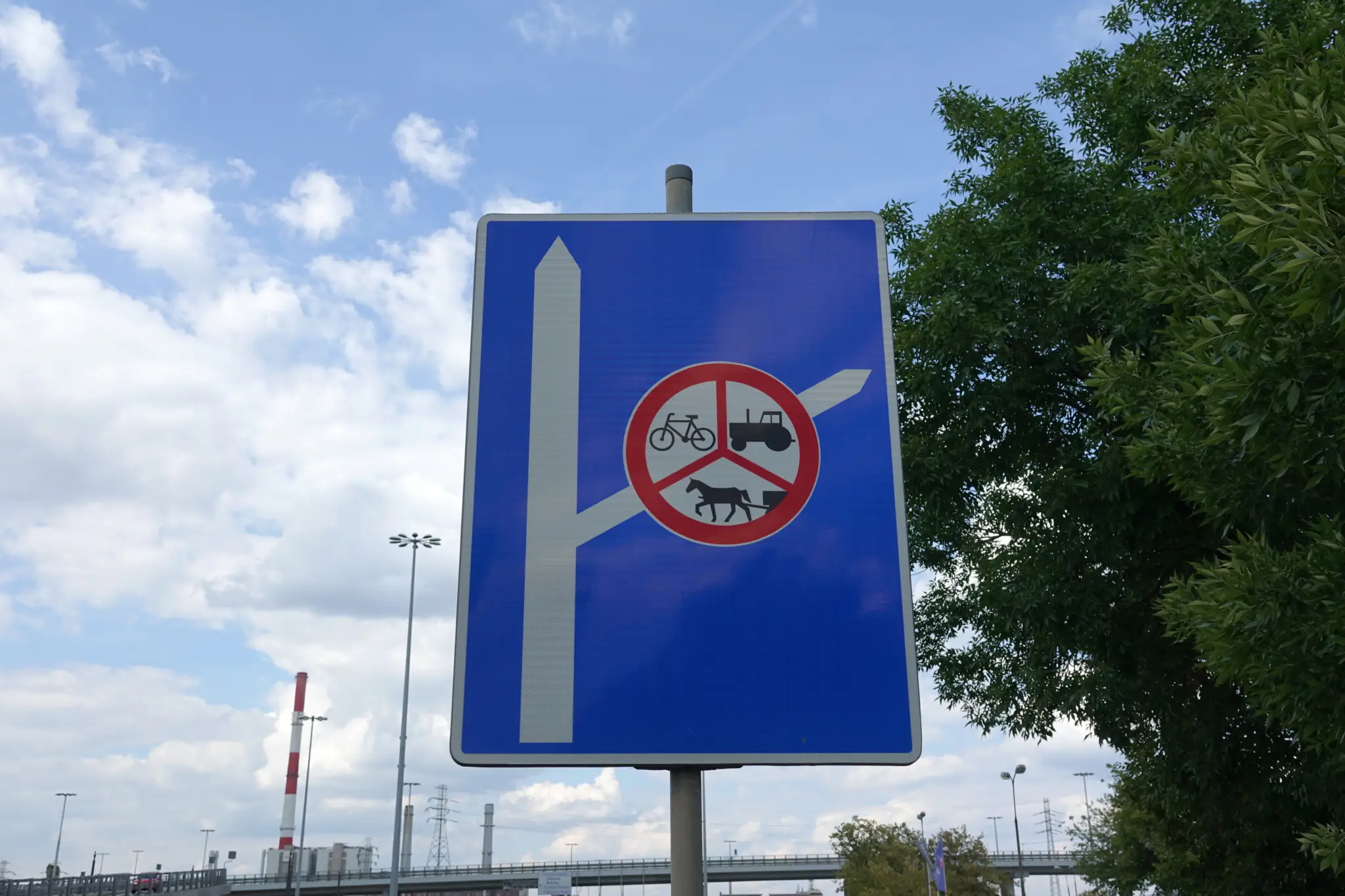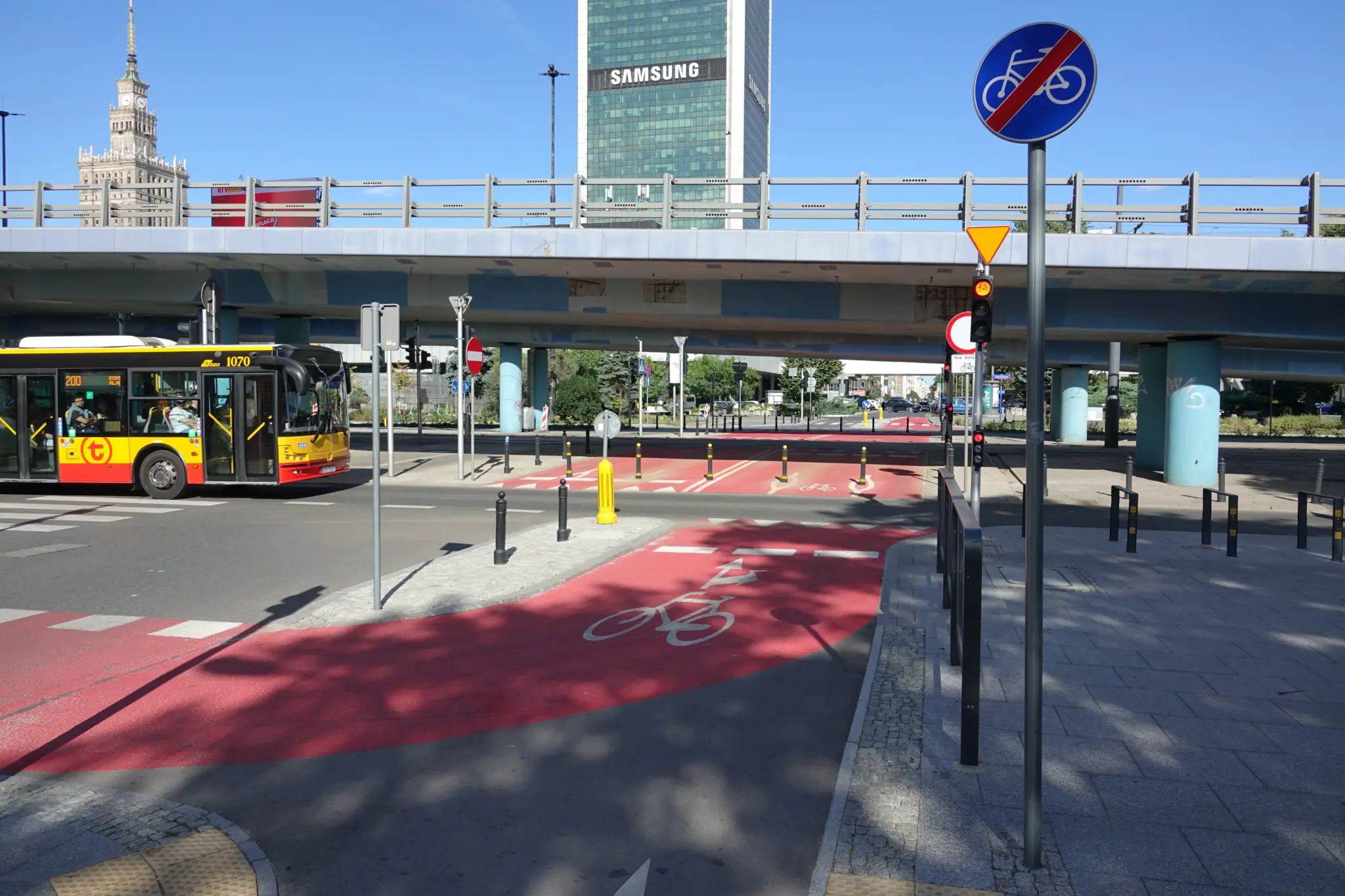Warsaw: The Next Bicycle-friendly City?

It is six years since former Polish Foreign Minister Witold Waszczykowski warned fellow Poles to beware of a ‘world made up of cyclists and vegetarians’ – one he claimed had little in common with traditional Polish values. Although Waszczykowski has long since left office, his interview back then left scars, as a press officer for the Department of Urban Planning in Warsaw told the Tagesspiegel newspaper. The government of the right-wing Law and Justice party (PiS) denounced cycling as a western thing, he told the paper. ‘It was almost as if communism were making a comeback. The claim was that cycling inhibits the freedom of the motorist.’
But if you take a bike ride through the Polish capital today, it soon becomes evident that those cyclists and vegetarians are increasingly making their mark. The centre of Warsaw now boasts a number of vegetarian – and even vegan – restaurants, burger joints for the most part. Yet despite this trend, Warsaw and most of the rest of Poland is still largely made up of meat-eaters and motorists. Not unlike Germany, birthplace of the ‘car-nivore’. Vegetarians and cyclists remain minority groups.
But in both countries, calls are growing ever louder for vegetarian food and cycle lanes – although not necessarily cheek by jowl. While vegetarian options are all about supply and demand, cycle paths sit squarely within the city’s remit. And here the facts speak for themselves: Warsaw is fast becoming a bike-friendly city, having built over 400 kilometres of cycle paths in the past 10 years. We had just 275 kilometres of cycle lanes in 2010, the city’s spokesperson explained. But by 2022 our network has grown to 720 kilometres, with an additional 10 kilometres to be added later this year. With 30 kilometres of paths currently in planning, the city has set a target of 900 kilometres. By comparison, Berlin is planning a cycle network of around 3,000 kilometres by 2030. Of course, Berlin is a bigger city.
I spent three weeks in Warsaw myself, and while it can hardly be described as a cyclist’s dream, a bike will certainly get you from A to B. The narrow bike lanes are bidirectional and took some getting used to, since cyclists come at you head on. I really enjoyed the well-used bike paths that run along the River Vistula towards the Kampinos National Park, where the cycling gets a bit more adventurous. But let’s stay in the flat city centre, perfect terrain for the bicycle.
The design principles for our cycling infrastructure were developed in 2010 and are now in urgent need of an overhaul, the spokesperson for urban planning explains. Łukasz Puchalski was appointed Warsaw’s first cycling officer in 2015. He is also director of the Municipal Roads Authority. From 2016 to 2019, Warsaw’s infrastructure received a major boost from an EU investment programme. Warsaw’s mayor, Rafał Trzaskowski, announced a long-term programme with a vision: ‘a new centre for Warsaw’. Its principal aim was to create public spaces that are greener, more accessible and friendlier to cyclists and pedestrians.
Getting people on board is always the challenge, explains the spokesperson ruefully. ‘When a prototype is presented for a new route, it is often met with vehement protests. Cars are still the main mode of transport and transport-related issues can often turn aggressively political. Generally speaking, we live in a society that is extremely dependent on the car. Developing any kind of green oasis under these circumstances is a real challenge.’

But he remains optimistic. The mood is changing, he says, and with the creation of new cycle lanes each year, more and more people are actually using them. A mini-campaign for a cycle lane on Warsaw’s Puławska Street recently emerged on Twitter.
‘Polish cities have become stricter about curbing car traffic, and at the same time bicycles are growing in popularity,’ says Marek Józefiak of Greenpeace Poland. ‘Kraków is setting the pace in this particular cycle race. With the former capital aiming to increase the share of bicycles in its transport mix to 25 per cent by 2025, the present capital seems to be lagging behind.’ But Warsaw’s urban planner remains unfazed by such a jibe: ‘It may well be the case that Krakow is a bicycle-friendly city, but it adds only five kilometres a year to its network. Here in Warsaw, it’s more like 30 kilometres.’
As Greenpeace Poland puts it, there need to be many more new cycle paths under construction and in use. Even though kilometres of new cycle paths are inaugurated every year, many activists point out that Warsaw is still a long way from the bicycle revolution taking place in Paris. Furthermore, Warsaw’s mayor missed an opportunity to bring about greater changes to urban transport during the pandemic, for instance, by establishing pop-up cycle lanes as in Berlin.
Ten years ago, there were very few cycle paths that went any distance in Warsaw
Oskar Kulik grew up in Warsaw and rides his bike in the city most days. In May, he had his first cycling accident, hit by a car. The driver was probably looking at his mobile phone when it happened. Kulik suffered a fractured vertebra but is now on the road to recovery. ‘I still have feelings of anxiety when I’m out on my bike.’

But Kulik is relatively happy about developments. ‘Ten years ago, there were very few cycle paths that went any distance in Warsaw,’ he recalls. ‘Things are now much improved. Today, I can reach most places in the city centre using mainly bike lanes.’
Adam Rajewski, an engineer who specialises in nuclear projects, also thinks cycling in Warsaw is becoming more enjoyable. Clocking up 120 kilometres or more every week on his way to work and appointments in the city, he believes the people of Warsaw are now more accepting of cyclists, despite the occasional three-way friction between motorists, cyclists and pedestrians. Rajewski doesn’t own a car. ‘With a few notable exceptions, you can get to most important places in the city by bike,’ he says.
Rajewski feels that planning approaches still leave a lot to be desired. Cycling infrastructure is ‘tacked on’ to urban planning, as opposed to being an integral component of it. This is noticeable when you cycle across Warsaw. ‘It results in some very labyrinthine cycle paths – and in some cases to unnecessary accident black spots with pedestrians. In addition, in parts of the city with very heavy traffic, existing cycle paths are unable to cope with the sheer volume of cyclists at rush hour in the summer. The progress made here over the past 10 years has been huge,’ Rajewski says. Although I still feel safer on Berlin cycle paths, he adds. But let’s not start comparing.
